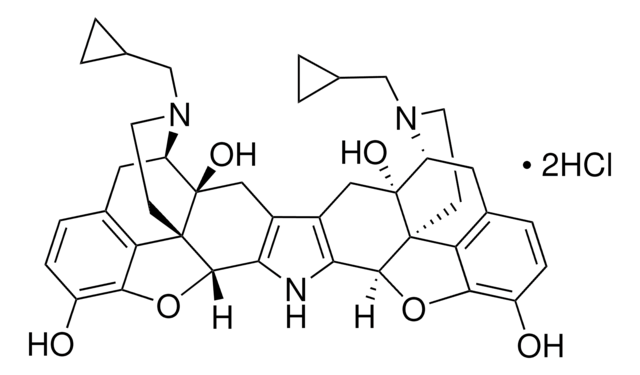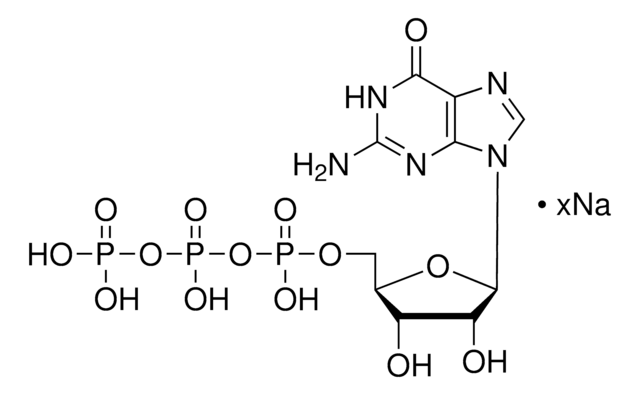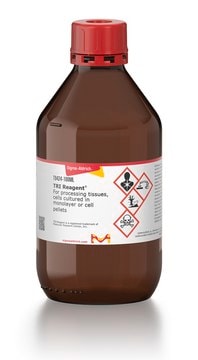A1439
Pituitary adenylate cyclase activating polypeptide-38
Synonyme(s) :
PACAP-38
Se connecterpour consulter vos tarifs contractuels et ceux de votre entreprise/organisme
About This Item
Formule empirique (notation de Hill):
C203H331N63O53S
Numéro CAS:
Poids moléculaire :
4534.26
Numéro MDL:
Code UNSPSC :
41106305
Nomenclature NACRES :
NA.32
Produits recommandés
Forme
powder
Niveau de qualité
Composition
Peptide content, ~70%
Numéro d'accès UniProt
Température de stockage
−20°C
Informations sur le gène
human ... ADCYAP1(116)
Amino Acid Sequence
His-Ser-Asp-Gly-Ile-Phe-Thr-Asp-Ser-Tyr-Ser-Arg-Tyr-Arg-Lys-Gln-Met-Ala-Val-Lys-Lys-Tyr-Leu-Ala-Ala-Val-Leu-Gly-Lys-Arg-Tyr-Lys-Gln-Arg-Val-Lys-Asn-Lys-NH2
Description générale
Pituitary adenylate cyclase activating polypeptide-38 (PACAP38) is mapped to human chromosome 18. 27-residue-amidated fragment (PACAP27) comprises another isoform. The PACAP38 is major isoform associated with mammals.
Application
Pituitary adenylate cyclase activating polypeptide-38 has been used to test its effect in stimulating the formation of cyclic AMP hypothalamus and cerebral cortex slices of chicken and to treat glioblastoma cells (U87MG) in cell migration assay to test its anti-invasive effects.
Actions biochimiques/physiologiques
Pituitary adenylate cyclase activating polypeptide-38 (PACAP38) is a cardioprotectant and may help in treating radiation-induced heart disease (RIHD). It plays a protective role during oxidative stress in cardiomyocytes. PACAP38 has antioxidant, anti-apoptotic and anti-inflammatory property. It is implicated in the pathophysiology of migraine and cluster headache.
PACAP-38 is a neuropeptide that has substantial sequence homology to vasoactive intestinal peptide (VIP). It is reported to serve as a neuronal survival factor.
Autres remarques
Lyophilized from 0.1% TFA in H2O
Code de la classe de stockage
11 - Combustible Solids
Classe de danger pour l'eau (WGK)
WGK 3
Point d'éclair (°F)
Not applicable
Point d'éclair (°C)
Not applicable
Équipement de protection individuelle
Eyeshields, Gloves, type N95 (US)
Certificats d'analyse (COA)
Recherchez un Certificats d'analyse (COA) en saisissant le numéro de lot du produit. Les numéros de lot figurent sur l'étiquette du produit après les mots "Lot" ou "Batch".
Déjà en possession de ce produit ?
Retrouvez la documentation relative aux produits que vous avez récemment achetés dans la Bibliothèque de documents.
Les clients ont également consulté
J Kinhult et al.
The European respiratory journal, 15(2), 243-247 (2000-03-08)
Pituitary adenylate cyclase-activating peptide (PACAP) 38 displays several biological activities relevant to obstructive airway disease. In this study, the occurrence of PACAP 38 in human small bronchi and corresponding pulmonary arteries was analysed immunocytochemically. The dilatory effects of this peptide
T Dickinson et al.
Neuropharmacology, 38(1), 167-180 (1999-04-08)
Peripheral nerve damage often results in the development of chronic pain states, resistant to classical analgesics. Since vasoactive intestinal polypeptide (VIP) and pituitary adenylate cyclase-activating polypeptide (PACAP) are up-regulated in dorsal root ganglion cells following peripheral nerve injury, we investigated
K Tornøe et al.
American journal of physiology. Endocrinology and metabolism, 279(6), E1413-E1425 (2000-11-30)
The concentration of pituitary adenylyl cyclase-activating polypeptide [PACAP-(1-38)] in porcine adrenal glands amounted to 14 +/- 3 pmol/g tissue. PACAP immunoreactive (PACAP-IR) fibers innervated adrenal chromaffin cells (often co-localized with choline acetyltransferase). Subcapsular fibers traversed the cortex-innervating endocrine cells and
Bernadett Tuka et al.
The journal of headache and pain, 17(1), 69-69 (2016-08-01)
Activation of the trigeminal-autonomic reflex, involving the trigeminal ganglion, the superior salivatory nucleus and the sphenopalatine ganglion (SPG) is crucial in the pathophysiology of cluster headache (CH). Since pituitary adenylate cyclase-activating polypeptide-38 (PACAP-38) is present both in the SPG and
A J Martínez-Fuentes et al.
Endocrinology, 139(12), 5116-5124 (1998-12-01)
We have recently shown that the two bioactive forms of pituitary adenylate cyclase-activating polypeptide, PACAP38 and PACAP27, stimulate GH release and GH messenger RNA (mRNA) accumulation in cultured porcine pituitary cells. However, dose- and time-related differences in the response to
Notre équipe de scientifiques dispose d'une expérience dans tous les secteurs de la recherche, notamment en sciences de la vie, science des matériaux, synthèse chimique, chromatographie, analyse et dans de nombreux autres domaines..
Contacter notre Service technique










